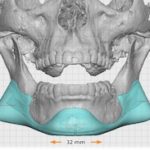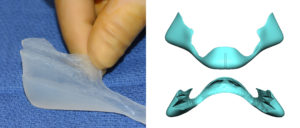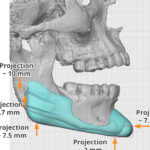Background: A custom jawline implant is the single most powerful procedure I have seen in facial reshaping surgery for many patients. Expanding the inferolateral bony contours of the lower jaw around its entire surface predictably creates a change in the shape of one’s face that creates a visible difference in the face-neck transition.
Custom jawline implants are specifically made for each patient off of their 3D CT scan. While computer designing gives the optimal chance for a successful aesthetic outcome, there is no assurance that it will create the desired aesthetic result in any given patient. Besides a patient experiencing a ‘new face’ from implant placement and the unpredictability of this psychological impact, the computer nor the surgeon can know exactly how to give any patient their ideal outcome. The implant’s dimensions are ultimately a judgment call in the design process.
As a result of how the look of the custom jawline implant will be interpreted, revision of such implants are not rare. Patients may ultimately determine that the implant is too small or too big and seek a new replacement. In doing so such new designs must take into account encapsulation of the existing implant and challenges that may arise in its placement and orientation on the bone.




Case Highlights:
1) Despite the success of custom jawline implants for many patients, some may require either increasing or downsizing their implant secondarily.
2) In replacing custom jawline implants is it important to realize their encapsulation may present placement obstacles that did not originally exist
3) Accounting for larger jaw angle shapes important in their primary or secondary placement.
Dr. Barry Eppley
Indianapolis, Indiana




